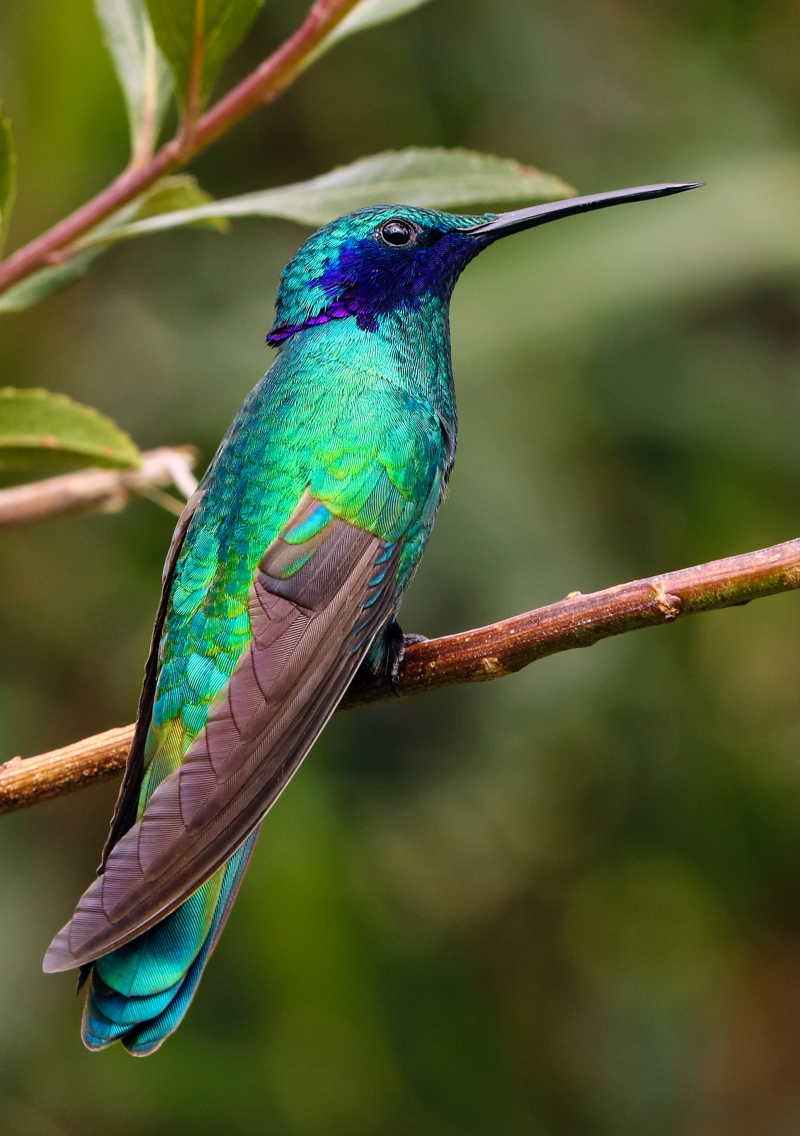Hummingbird
The Hummingbird, known for its vibrant plumage, incredible agility, and hovering capabilities, is a small marvel of the avian world. With over 300 species belonging to the family Trochilidae, these tiny birds are found exclusively in the Americas, from Alaska to Tierra del Fuego. Their dazzling colors, rapid wing beats, and unique feeding behaviors make hummingbirds a captivating and iconic part of the natural world.
Perhaps the most distinctive feature of hummingbirds is their ability to hover in mid-air. Their incredible agility is facilitated by rapid wing beats, often exceeding 50 beats per second, allowing them to move in any direction – forward, backward, up, or down. This remarkable flying ability is complemented by a unique ball-and-socket joint at the shoulder, enabling a full range of motion for their wings.
Hummingbirds are also renowned for their iridescent plumage, a result of microscopic platelets in their feathers that refract light, creating a dazzling array of colors. These vibrant hues serve multiple purposes, including courtship displays and communication, as well as providing camouflage in the dappled sunlight of their preferred habitats.
One of the most fascinating aspects of hummingbirds' biology is their feeding behavior. With high metabolic rates and rapid wing beats, hummingbirds have a constant need for energy. They primarily feed on nectar from flowers, using their specialized bills and extendable, tube-like tongues to reach deep into blossoms. The nectar provides the necessary fuel for their high-energy lifestyle. In addition to nectar, hummingbirds also consume small insects and spiders for essential proteins and nutrients.
The relationship between hummingbirds and the plants they pollinate is mutually beneficial. As hummingbirds feed on nectar, they inadvertently transfer pollen from one flower to another, facilitating the process of pollination and aiding in the reproduction of flowering plants. Many plants have evolved specific features, such as tubular flowers, to attract hummingbirds as their primary pollinators.
















